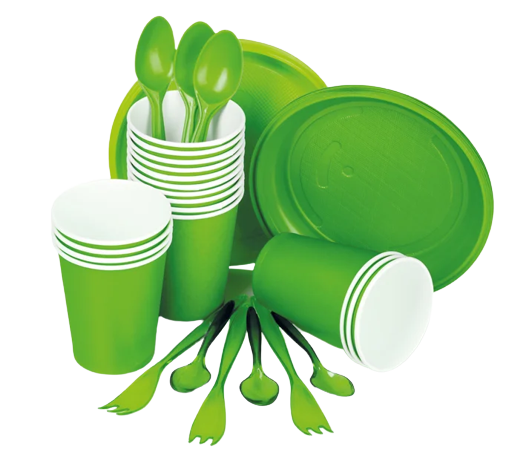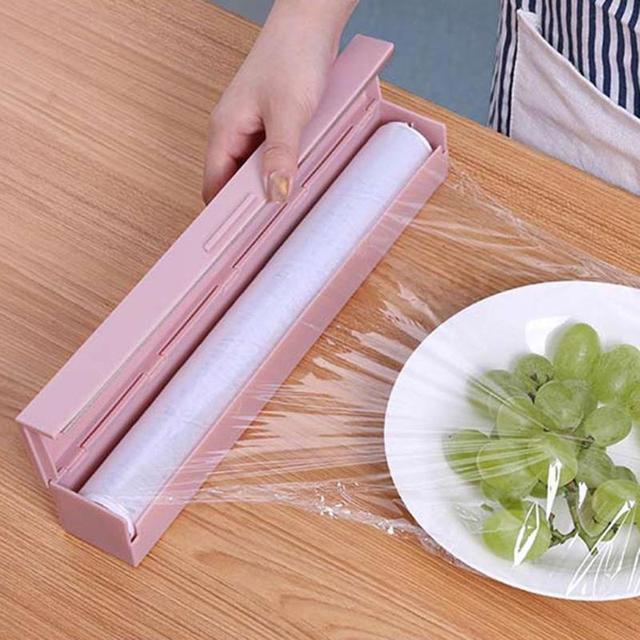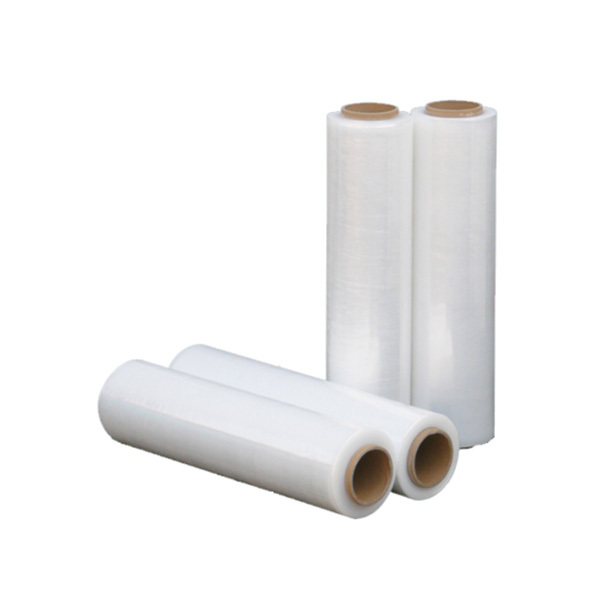Plates and cutlery

Plates and cutlery
Sustainable alternative to plastic utensils. Made from renewable resources, bioplastic cutlery is compostable, reduces environmental impact, and offers an eco-friendly option for single-use utensils.
 Carbon Footprint: 500 to 900 kg CO2e per tonne*
Carbon Footprint: 500 to 900 kg CO2e per tonne*
 Time to decompose : 2 to 6 weeks in facility
Time to decompose : 2 to 6 weeks in facility
 Recyclability : 4 to 6 times
Recyclability : 4 to 6 times
 Price Range : $ 0.15 to 0.30*
Price Range : $ 0.15 to 0.30*
Key features
| Features | Description |
|---|---|
| Material | Bioplastic cutlery is made from renewable resources such as corn starch, sugarcane, or other plant-based materials. It is free from petroleum-based plastics. |
| Biodegradability | Bioplastic cutlery is designed to biodegrade, breaking down into natural elements under specific conditions, reducing its environmental impact compared to traditional plastic cutlery. |
| Compostability | Many types of bioplastic cutlery are compostable, meaning they can be added to organic waste and undergo composting, contributing to nutrient-rich soil production. |
| Strength and Durability | Bioplastic cutlery is designed to have sufficient strength and durability for typical use. It can withstand regular use without easily breaking or deforming. |
| Heat Resistance | Bioplastic cutlery is generally heat-resistant, allowing it to be used for hot food and beverages without significant deformation or melting. |
| Food Safe | Bioplastic cutlery is typically manufactured to meet food safety regulations, ensuring it is safe to use for serving and consuming food. |
| Design and Ergonomics | Bioplastic cutlery comes in various designs and sizes, offering options for different culinary needs and user preferences. It is often designed with ergonomic features for comfortable handling. |
| Packaging | Bioplastic cutlery is commonly packaged in sets or individually wrapped for easy distribution and hygiene purposes. Packaging materials may also be biodegradable or recyclable. |
| Certifications | Bioplastic cutlery may carry certifications such as compostability standards (e.g., ASTM D6400, EN 13432) or eco-labels, indicating compliance with specific environmental standards. |
| Price | The price of bioplastic cutlery can vary depending on factors such as the quality, brand, quantity purchased, and regional factors. Generally, it may be slightly more expensive than traditional plastic cutlery due to the higher cost of raw materials and production methods. |
Specification
- Material Composition : Bioplastic cutlery is typically made from renewable resources such as corn starch, sugarcane, or other plant-based materials. It is free from petroleum-based plastics.
- Biodegradability : Many types of bioplastic cutlery are designed to biodegrade, breaking down into natural elements like water, carbon dioxide, and biomass under specific composting conditions. The biodegradation time frame can vary.
- Compostability : Bioplastic cutlery is often compostable, meaning it can be added to organic waste and undergo composting, contributing to nutrient-rich soil production. However, not all bioplastic cutlery is suitable for home composting and may require specific conditions found in industrial composting facilities.
- Strength and Durability : Bioplastic cutlery is designed to have sufficient strength and durability for typical use. It should be able to withstand regular use without easily breaking or deforming.
- Heat Resistance : Bioplastic cutlery is generally heat-resistant, allowing it to be used for hot food and beverages without significant deformation or melting. However, the exact heat resistance may vary depending on the specific type of bioplastic and manufacturing process.
- Food Safe : Bioplastic cutlery is typically manufactured to meet food safety regulations, ensuring it is safe for serving and consuming food. It should be free from harmful substances and chemicals.
- Design and Ergonomics : Bioplastic cutlery comes in various designs and sizes, offering options for different culinary needs and user preferences. It is often designed with ergonomic features for comfortable handling and usage.
- Packaging : Bioplastic cutlery is commonly packaged in sets or individually wrapped for easy distribution and hygiene purposes. Packaging materials may also be biodegradable or recyclable.
- Certifications : Bioplastic cutlery may carry certifications such as compostability standards (e.g., ASTM D6400, EN 13432) or eco-labels, indicating compliance with specific environmental standards. These certifications can provide assurance of the product's environmental attributes.
Related Products
FAQ's
- Q1: What is bioplastic cutlery?
- A1: Bioplastic cutlery is a type of utensil made from renewable resources such as corn starch, sugarcane, or other plant-based materials. It is an alternative to traditional plastic cutlery derived from fossil fuels.
- Q2: Is bioplastic cutlery compostable?
- A2: Many types of bioplastic cutlery are compostable. They can break down into natural elements under specific composting conditions, contributing to nutrient-rich soil production.
- Q3: How long does it take for bioplastic cutlery to biodegrade?
- A3: The biodegradation time frame for bioplastic cutlery can vary depending on factors such as the specific type of bioplastic and composting conditions. In industrial composting facilities, it can typically biodegrade within a few months.
- Q4: Can I dispose of bioplastic cutlery in my home compost?
- A4: Not all bioplastic cutlery is suitable for home composting. Some types require specific conditions found in industrial composting facilities to properly biodegrade. It's important to check the packaging or manufacturer's instructions to determine the appropriate disposal method.
- Q5: Is bioplastic cutlery heat-resistant?
- A5: Bioplastic cutlery is generally heat-resistant and can withstand hot food and beverages. However, the exact heat resistance may vary depending on the specific type of bioplastic and the manufacturing process.
- Q6: Is bioplastic cutlery safe for food contact?
- A6: Yes, bioplastic cutlery is typically manufactured to meet food safety regulations. It is designed to be safe for serving and consuming food.
- Q7: Can bioplastic cutlery be reused?
- A7: Bioplastic cutlery is primarily designed for single-use purposes. While it may be possible to reuse certain types of bioplastic cutlery, it is not intended for long-term or repeated use. Reusable alternatives like stainless steel or bamboo cutlery are better suited for multiple uses.
- Q8: Can bioplastic cutlery be recycled?
- A8: The recyclability of bioplastic cutlery depends on the specific type of bioplastic and the recycling facilities available in your area. In many cases, bioplastic cutlery should be disposed of in the appropriate composting or organic waste stream rather than traditional plastic recycling.
- Q9: Does bioplastic cutlery cost more than traditional plastic cutlery?
- A9: Bioplastic cutlery can be slightly more expensive than traditional plastic cutlery due to the higher cost of raw materials and production methods. However, prices can vary depending on factors such as the brand, quantity ordered, and regional factors.
- Q10: How can I ensure the bioplastic cutlery I purchase is environmentally friendly?
- A10: Look for bioplastic cutlery that carries certifications such as compostability standards (e.g., ASTM D6400, EN 13432) or eco-labels. These certifications indicate compliance with specific environmental standards and can help ensure the environmental friendliness of the product.








